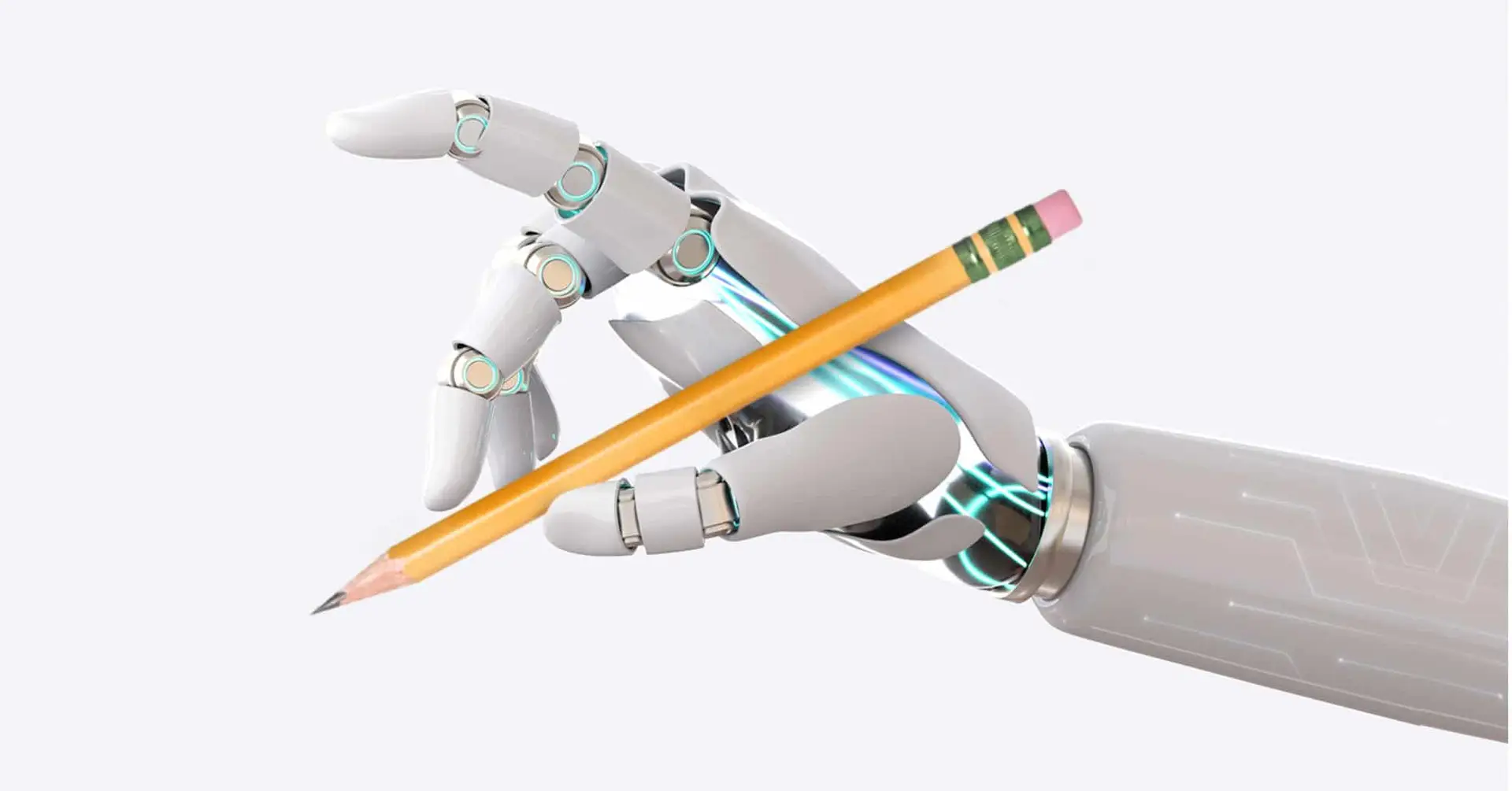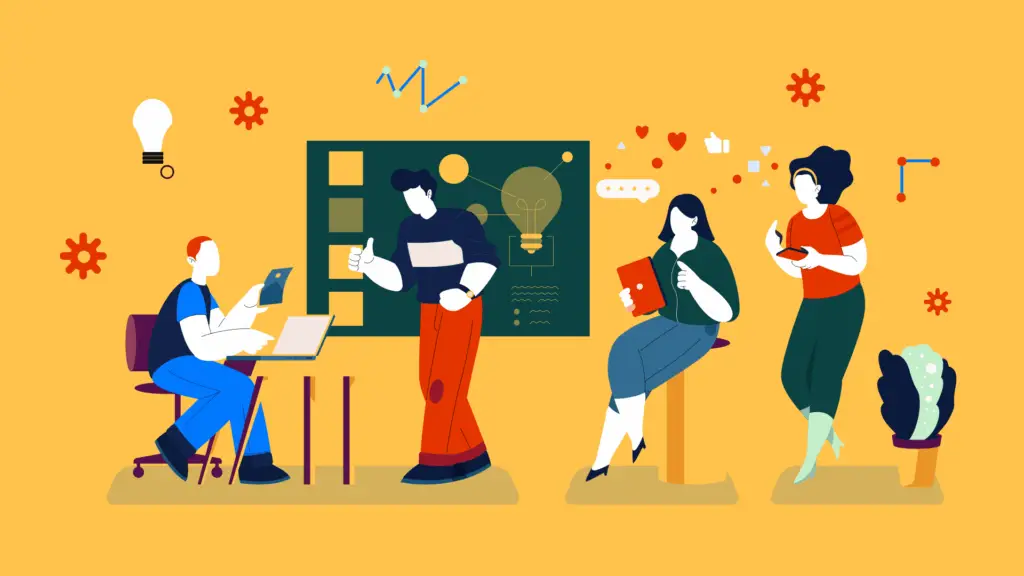Should we embrace Artificial Intelligence?
In case you hadn’t noticed, Artificial Intelligence (AI) has become an ever-growing presence in virtually all fields over the last few years, and graphic design is no exception.
It’s been morphing the way graphic designers, students, design enthusiasts, and even marketing professionals approach their work – for better or for worse. From automating mundane tasks to creating entire designs from scratch, this technology is rapidly transforming the future of graphic design and it’s showing no sign of slowing down.
In this article, we’ll take a look at how AI is currently impacting the future of graphic design, what potential benefits and drawbacks it may bring, and how it might shape the industry in the years to come.
Computer-generated design is already showing up more than you may realize
Are you using AI already, without even knowing it? It’s possible that whether you’ve directly designed with it or not, you’ve interacted with an AI-led resource in some shape or form.
Online tools such as Canva, Adobe Spark, and ‘instant erasers’ on your smartphone all use a form of AI algorithm to make the process simpler. Adobe’s Sensei AI uses machine learning algorithms to automate tasks, like image resizing and color matching. For seasoned professionals, Adobe’s Creative Cloud uses AI to recommend fonts and color palettes based on the user’s past work, streamlining the creative process.
And of course, it’s been rising in popularity on social media platforms in the form of facial filters and augmented reality – and it’s evolving there too.
These impressive tools open up the world of design to non-designers, while drastically cutting down time for those designing day-to-day. But is it all good?
Design firm Creative Principals is embracing the technology, openly sharing their experience in using AI tools MidJourney and DALL.E to produce mood boards for clients. They note in this case study for Blooloop, on their experiential design for the J. Kruse Education Center, that using AI to “instantly” give clients visual feedback “confirms the validity of the idea or even takes us in a new direction that we wouldn’t have explored (or have had time to explore) otherwise.”.
Graphic designer Colin Maddox has a different view. In response to this animated video that took Idan Benishu, Head of Marketing at Dataloop AI, “less than 10 minutes” to make using a mixture of Midjourney, Chat GPT and D-ID, Maddox writes: “As we see these amazing technologies growing ever more powerful, we need to remember not only the human risks associated with ever-increasing automation, but also the aesthetic risks of homogeneous, repetitive, low-effort content being generated at ever-increasing speeds and exponential quantities.”.
AI graphic design: the potentials and pitfalls
No matter which side of the fence you currently sit on, there are some clear potentials and drawbacks to this rising technology.
Potential: Immersive experiences
The Dalí Museum in St. Petersburg Florida is currently running Dalí’s Dream Tapestry, an AI-powered interactive exhibition that turns visitors’ dreams into artwork using DALL.E – “an A.I. system that can create realistic images and art from a description in natural language.”
Could this be the beginning of a new wave of designed collaboration? Leading to new job roles appearing across the industry? Possibly. AI Managers, developers, and designers could all be on the horizon…
Pitfall: Job replacement
Let’s address the elephant in the room – while there is scope for a new wave of employment, there is a lot of conversation about AI advancements reducing the need to hire real people.
While we cannot say for sure what will happen here, we strongly believe that nothing can ever replace the years of skill talented designers possess. Can AI truly adapt to the nuance and individual style needed to pull off the perfect design experience?
Potential: Copyright protection
AI watermark generators are on the rise, too. Clever AI embeds designers’ and artists’ names or identity marks within an image to protect work from copyright infringement.
Pitfall: Watermark removal
On the flip side, new free tools are emerging that can remove watermarks from designers’ work, causing huge implications and making the integrity of design work questionable at best.
Potential: Increased efficiency
There’s no doubting the speed and efficiency AI can provide. With properly inputted direction, these tools can handle the admin tasks that typically eat into a designer’s time using automation – freeing them up to focus on more creative and strategic tasks.
Pitfall: homogenization
Yet, the potential for homogenization within design is a threat, as AI-generated designs may lack the creativity and individuality that human designers bring to their work. Could everything eventually end up looking the same?
The future of graphic design now AI is here to stay
While it’s impossible to predict exactly what will happen when it comes to artificial intelligence and its effects on the graphic design industry as things progress, the current landscape is both exciting and concerning.
When used well, it’s a powerful extension to a designer’s toolbox. When used without thought, we risk losing the finesse and individuality we’ve all built over the years.
And what about ethics? We’ve already seen drastic implications on the younger generation’s mental health with increased AR on social media. So it’s possible that AI could begin to reshape cultural norms and perceptions, blurring the lines between original and computer-generated content.
Ethical considerations like this will (hopefully) become even more important as AI continues to evolve. Questions about who should be allowed access to these powerful tools (and under what circumstances) will need to be addressed before any widespread adoption takes place.
Use AI as inspiration, not a replacement
The way we see it, these incredibly advanced tools should be used as inspiration, not as a replacement for dedicated design skill and knowledge.
It’s clear that the incorporation of AI into the graphic design industry is rapidly changing the way designers approach their work. While there are potential benefits to using AI in the design process, such as increased efficiency and speed, there are also drawbacks, like ‘samey’ outcomes and potential job loss.
As AI continues to advance, it is important to stay informed and think about the ethical and societal implications of AI technology before diving in head first.
Go forth and experiment and enjoy the process, but be mindful that AI is still “artificial”, after all…
Need design, fast? Get high-quality work *almost* as fast as AI (in just one day!), with our expert, vetted team. Book a free 15 minute demo to learn more.



